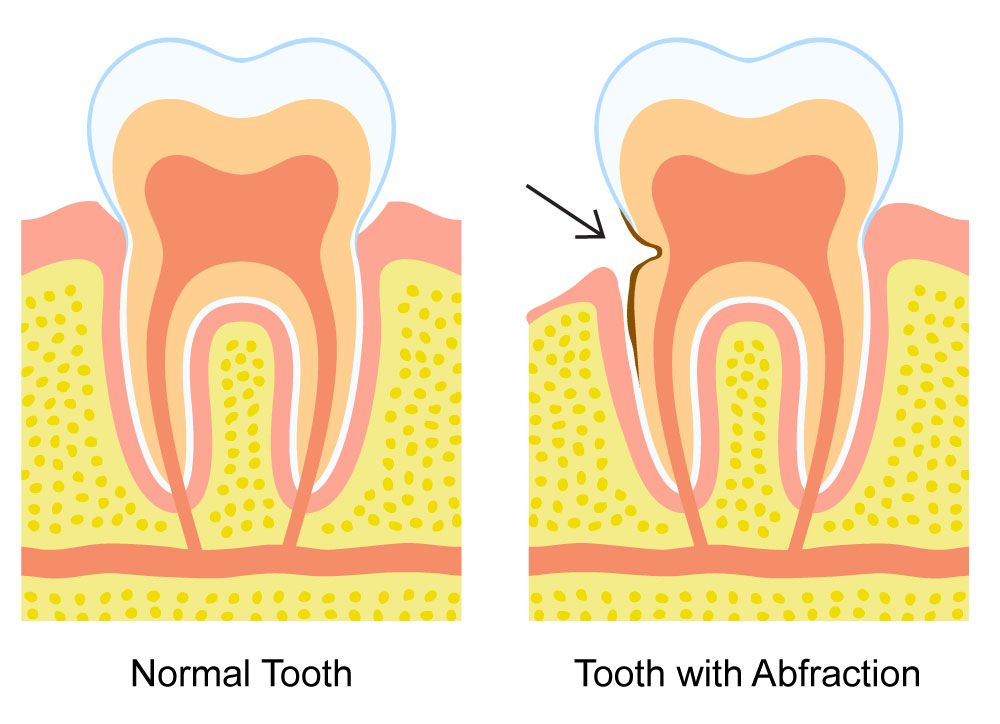The Causes of Abfraction
 If you suffer from teeth grinding or malocclusion, you may be at risk of developing abfractions. Seeking treatment for the underlying causes of abfraction, along with repairing any existing lesions, can help protect your smile and keep your oral health on track. Restorative dentistry treatments can effectively restore the damage caused by abfraction, prevent further damage, and improve oral health. For more information about the causes of abfraction and to discuss your treatment options, schedule a consultation with South Ogden, UT dentist Patrick Tanner.
If you suffer from teeth grinding or malocclusion, you may be at risk of developing abfractions. Seeking treatment for the underlying causes of abfraction, along with repairing any existing lesions, can help protect your smile and keep your oral health on track. Restorative dentistry treatments can effectively restore the damage caused by abfraction, prevent further damage, and improve oral health. For more information about the causes of abfraction and to discuss your treatment options, schedule a consultation with South Ogden, UT dentist Patrick Tanner.
What Is Abfraction?
An abfraction is a condition in which small notches, or lesions, develop near the gum line. These notches are often angular, however, they may become rounded over time as a result of abrasively brushing the teeth.
What Causes Abfraction?
Abfraction is caused by stress and pressure applied to the teeth through biting, chewing, clenching the teeth, and most commonly, teeth grinding. These forces put great stress on the teeth near the gum line, where the enamel and cementum of the teeth meet. Repeated stress from chewing and grinding the teeth can cause this area to weaken, leading to a break down or fracture of the enamel near the gum line.
Not all chewing and biting is believed to lead to abfraction. A normal, properly aligned bite is less likely to cause abfraction. However, abfraction develops when the teeth are misaligned, a condition called malocclusion. This may be because some teeth receive more of the stress from biting and chewing than other teeth when the bite is not properly aligned.
The Dangers of Abfraction
Abfraction is dangerous to oral health and can cause permanent damage to the teeth. Abfraction damages the enamel layer of the tooth. This increases the risk of tooth decay because it leaves the inner structures of the tooth vulnerable to tooth decay and bacteria. If left untreated, abfraction can lead to root canal infections, severe decay, and even tooth loss.
Treatment for Abfraction
Treatment for abfraction begins with a thorough dental examination to determine the cause of abfraction and the extent of damage. Then, a personalized treatment plan can be developed.
Correcting malocclusion can help patients when abfraction is caused by improper bite alignment. Treatment can reduce uneven biting forces within the mouth, and in doing so, reduce the risk of abfraction lesions.
Those who have developed abfraction lesions as a result of chronic teeth grinding often see reduced risk of abfraction by seeking treatment for teeth grinding, such as nightly use of a mouth guard.
Abfraction lesions can be repaired with restorative dentistry treatment, including tooth-colored fillings. Tooth-colored fillings made of composite resin have proven beneficial in the treatment of abfraction by restoring lost areas of the teeth.
Find Out Which Treatment Is Right for You
Treating the underlying causes of abfraction can help improve oral health and prevent damage caused by abfraction lesions. To find out which treatment is right for you, or for answers to your questions about abfraction, we welcome you to schedule a consultation with Dr. Tanner today.


